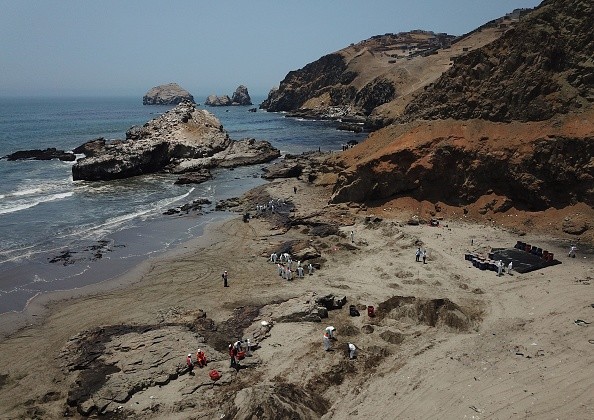Hunga-Tonga-Hunga-Ha'apai volcano which is situated about 8-mile off the coast of the island of Fonufo'ou in Tonga erupted the previous weekend. Many countries throughout the world were forced to issue tsunami warnings as a result of the enormous blow.
A previous eruption in 2015 of the same volcano created minor land formations, which garnered headlines as well. Approximately 50% additional landmass has been added to the volcano-made islets as a result of the last eruption. A tremendous explosion, however, wiped off most of the surrounding landforms.

How Powerful was the Explosion?
Four days after the volcanic eruption, Tonga remains isolated from the rest of the world, with its airport buried in ash and undersea communication lines broken, according to Interesting Engineering.
An investigation by NASA on this volcano had been ongoing for some time before its most recent eruption. According to NASA Goddard Space Flight Center head scientist James Garvin in an interview with NPR, the islands that make up Tonga are located along a subduction zone, where one part of the Earth's crust dips under a second.
Garvin estimated the eruption's power at roughly 10 megatons of TNT, according to his calculations. 10 megatons of TNT is 500 times more powerful than Hiroshima's nuclear bomb at the end of World War II, if that doesn't sound like a lot.
NPR quotes geophysicist Michael Poland, of the U.S. Geological Survey, as saying that the Hunga Tonga-Hunga Ha'apai eruption, despite its force, was relatively brief, lasting less than 60 minutes.
An explosion so small that it triggered a massive tsunami has baffled scientists for more than a century, claims Poland, but the real question is how such a small eruption could produce such a massive bang and tsunami.
Also Read: Images Reveal Complete Devastation of Tonga After Underwater Volcanic Eruption
Impacts of the Eruption
"The first explosion ... our ears were ringing and we couldn't even hear each other, so all we do is pointing to our families to get up, get ready to run," local journalist Marian Kupu said.
"We evacuated and then we, all our families, were just running away from the Kolovai area, because Kolovai is right beside the seashore," Kupu said, explaining the chaotic scenes just outside the capital Nuku'alofa on Saturday evening.
At least three people were killed and dozens of homes and businesses were damaged by the 15-meter-high tsunami that was produced by the eruption of a volcano.
As a result of the thick ash plume that was transported throughout the country, residents were advised to wear masks and only drink bottled water, and relief from Australia and New Zealand was delayed.
"The dust is on rooftops, trees, everywhere," Kupu said.
Currently, agencies are most concerned about providing safe drinking water to the citizens.

Clean Up Efforts
Outlying islands, including one where all dwellings were destroyed and another where just two remained, have been visited by rescue crews.
A British woman and two other nationals have been killed in the accident. As the volcano's ash continues to fall, aid attempts have been hampered.
Planes carrying drinking water and other essentials have been allowed into the airport's main runway thanks to the efforts of volunteers.
Flights were anticipated to resume in the region on Wednesday morning, according to a UN representative in Tonga, despite the fact that cleaning the ash had proved more difficult than planned.
Related Article: Tonga Volcano's Eruption is so Loud Thundering Sound Waves Were Heard in Alaska
For more news, updates about volcanic eruption and similar topics don't forget to follow Nature World News!
© 2024 NatureWorldNews.com All rights reserved. Do not reproduce without permission.





